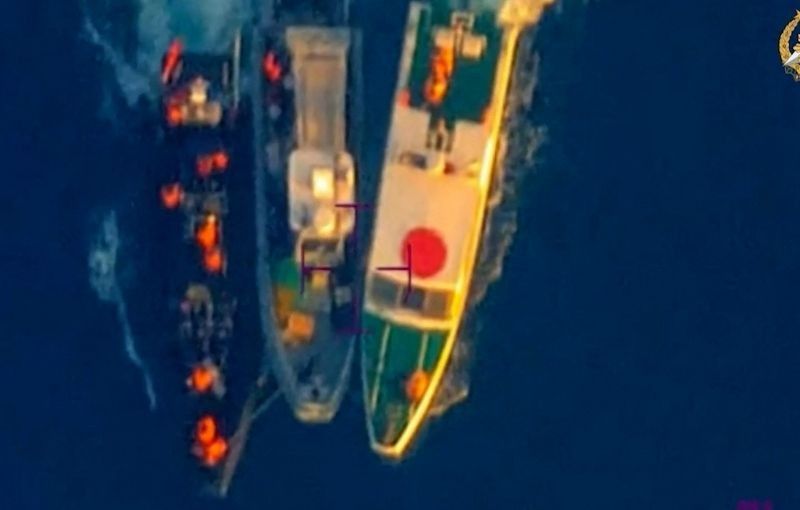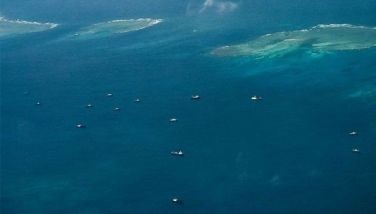DIME Strategy: What Manila can do after the June 17 South China Sea clash

The Philippines needs to re-examine its approach to the South China Sea. While the June 17 incident was seen by some as a debacle, it was probably an attempt to test a new approach.
Since 2023, Manila has been utilizing a multi-pronged transparency approach, which appears to primarily focus on naming and shaming China. It was driven by an untested assumption that Beijing is strongly influenced by the reputational costs of its illegal and coercive activities. What was apparent in the past year is that Manila has not achieved any substantial gains in its fight for control of Ayungin Shoal.
READ: Philippine ship, Chinese vessel collide in South China Sea
The events of June 17 may also be a signal of Manila’s efforts to become less predictable to Chinese forces. Before this, Manila had all but constrained its options by telegraphing its responses to every tactical-level provocation of Beijing. Early on, a Philippine spokesperson announced that the military won’t be used for operations. Appearing to be seizing the moral high ground, a spokesperson announced that its coast guard would not follow Beijing’s example on the use of water cannons.
Pronouncements on potential triggers to the U.S.-Philippines Mutual Defense Treaty, or MDT, have also made headlines. These announcements may have played into Beijing’s hands as it started to become even harsher in its response without crossing the “red lines" Manila drew. On the other hand, Manila’s partners increased their presence in the Philippine Exclusive Economic Zone but fell short of demonstrating overt support to the Armed Forces of the Philippines. Beijing appeared to be undeterred by the actions of Manila and the West and further intensified its pseudo-blockade of BRP Sierra Madre.
Partner fatigue was also evident among those who supported Manila. The groundswell of international support expected of transparency did not fully materialize. It was to a large extent limited to “Western countries” as well as India, Japan and South Korea, and they are becoming content with only issuing statements but not taking the risk on behalf of the Philippines. None of Manila’s immediate neighbors within the Association of Southeast Asian Nations said anything; Vietnam occasionally released a statement, but it put Manila and Beijing on the same level as if the former was not a victim of the latter.
The June 17 incident is a sign of two things:
Firstly, Manila’s approach is changing toward calculated risk-taking, demonstrating to China it will not accomplish its objectives as easily as it did in Mischief Reef and Scarborough Shoal.
Secondly, it was an activity designed to show agency, such as its decisions will not be upon the dictates of its ally and partners but on the determined posture of a Middle Power. The shift in approach is long overdue. Any international relations student knows that self-help is the name of the game.
Manila needs to adopt a real strategy that is based on combining Diplomatic, Informational, Military, and Economic (DIME) approaches. It must elaborate in no uncertain terms its vision and political objective for its portion of the South China Sea and develop its strategic narratives around these vision and objectives. It must be able to define the contours of an acceptable modus vivendi in the South China Sea and impose a fait accompli on China.
Cards to play
Diplomatic and informational. Unity of command should be the main message of the National Maritime Council. The political leadership must define what an acceptable victory for the Philippines vis-à-vis its goals in the West Philippine Sea is, and the National Maritime Council should be on top of the Philippines’ South China Sea policymaking.
The entry of the National Maritime Council in the aftermath of June 17, while rocky at the start, provided the national leadership with a breathing space to reassess options and support presidential decision-making. For all the hiccups and contradictions emanating from the meeting of the NMC, reasoned deliberation and not irrational emotion should be the basis of President Bongbong Marcos’ decisions in the aftermath of the latest crisis.
The NMC should also help steer the government toward a coherent diplomatic strategy for the West Philippine Sea. Our messages should now focus more on an international audience. The NMC must find a way to harness international support toward an international coalition that will exact real costs to compel Beijing back to the negotiating table. The only peaceful solution to the Ayungin Standoff is a negotiated settlement. Manila’s diplomats must be empowered and enabled to accomplish this delicate task of accomplishing Philippine diplomatic and security goals in an atmosphere conducive to hard but peaceful bargaining. This is where the informational element of the strategy comes in.
It is in Manila’s interest, therefore, to rein in spokespersons who tend to issue conflicting narratives and signals. The government should seriously consider returning the international spokesperson function to the Department of Foreign Affairs since all other claimant-states use their foreign ministries to comment on all things South China Sea. It should be obvious that China has developed an immunity to transparency and doing more of the same and expecting different results is, well, irrational and unwise. The Philippines must also invest in its embassies globally so that they can organize workshops, conferences, and meetings that will show the Philippines’ side of the story and increase awareness strategically.
Military. The military aspect means that the Department of Defense and AFP should find a way to get the Comprehensive Archipelagic Defense Concept into a realizable strategy and achievable defense plan. The DND and Department of Transportation must agree on how the AFP and the PCG will be working together in responding to PRC aggression while enhancing the Coast Guard’s safety functions.
Manila should stay the course and continue to deploy the navy to resupply the BRP Sierra Madre. This is a fait accompli that China must accept. Civilianizing our presence on Ayungin Shoal will simply afford the Chinese an opportunity to evict us from the feature. Effective occupation is the key to a winning compromise, and Manila cannot litigate its way to getting what it wants in the South China Sea. With all due respect to the legal experts, a new case is not helpful to Manila at this point. Lawfare is a small part of what makes the world work. Diplomacy and military tools remain to be the most potent tools when effectively wielded.
Economic. An economic strategy in the West Philippine Sea should mean finding ways to prevent national and subnational relationships from developing into unnecessary entanglements that become a source of critical vulnerability. What is being revealed now with the Alice Guo and POGO stories is that influence operations run deep in the Philippines; sub-national subversion seems to be the name of the game.
Harsh as some of these recommendations are, it is quite clear that Beijing has not been deterred, and the wariness of Southeast Asia may at some point deter even the US and the West. The Philippines must therefore go back to the drawing board since the President has already called for more options. The NMC should now impose strategic thinking in policy; strict operational security at the unit level; and discipline in strategic messaging.
Julio S. Amador III is the CEO of Amador Research Services, a geopolitical consultancy based in Manila.
- Latest





























